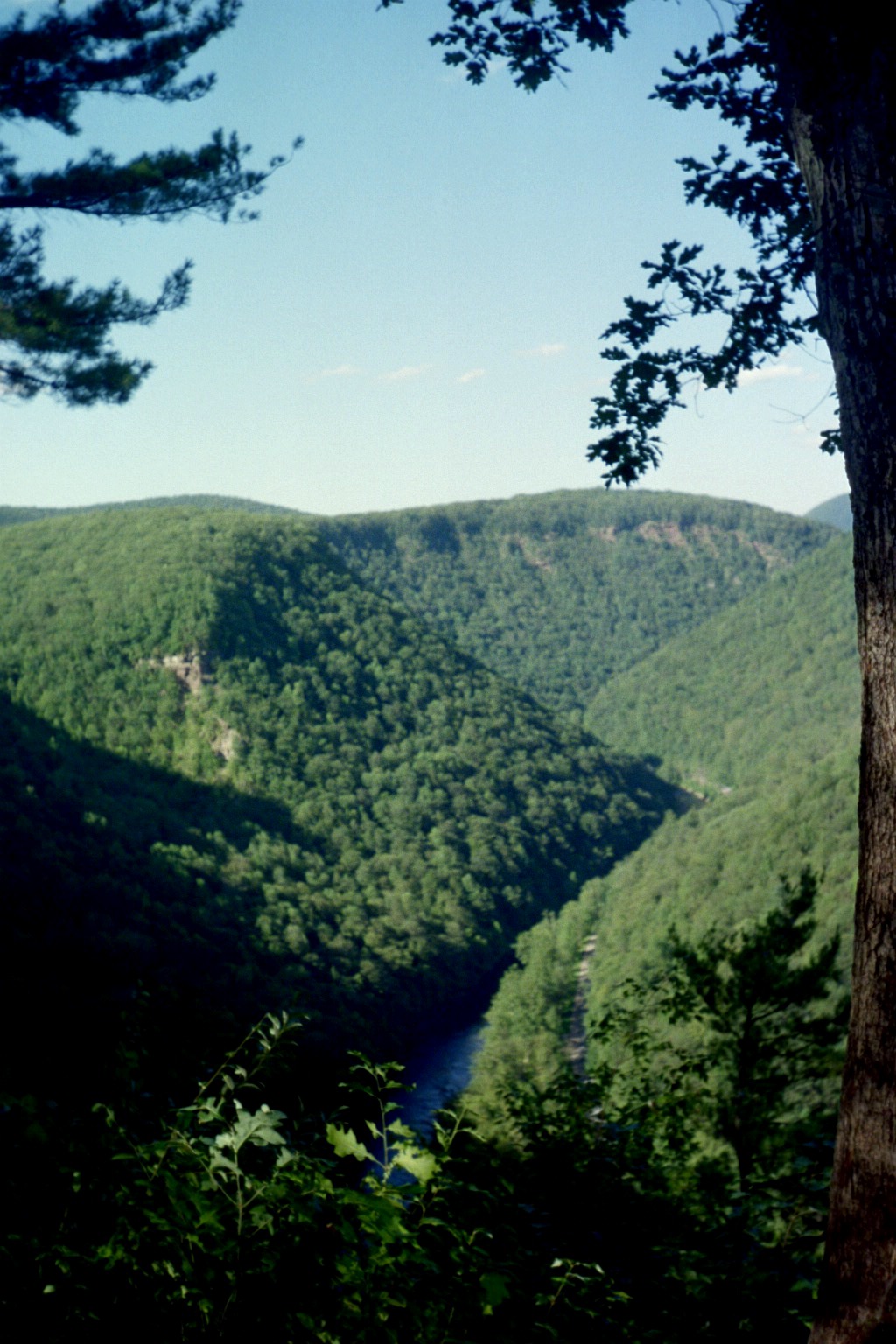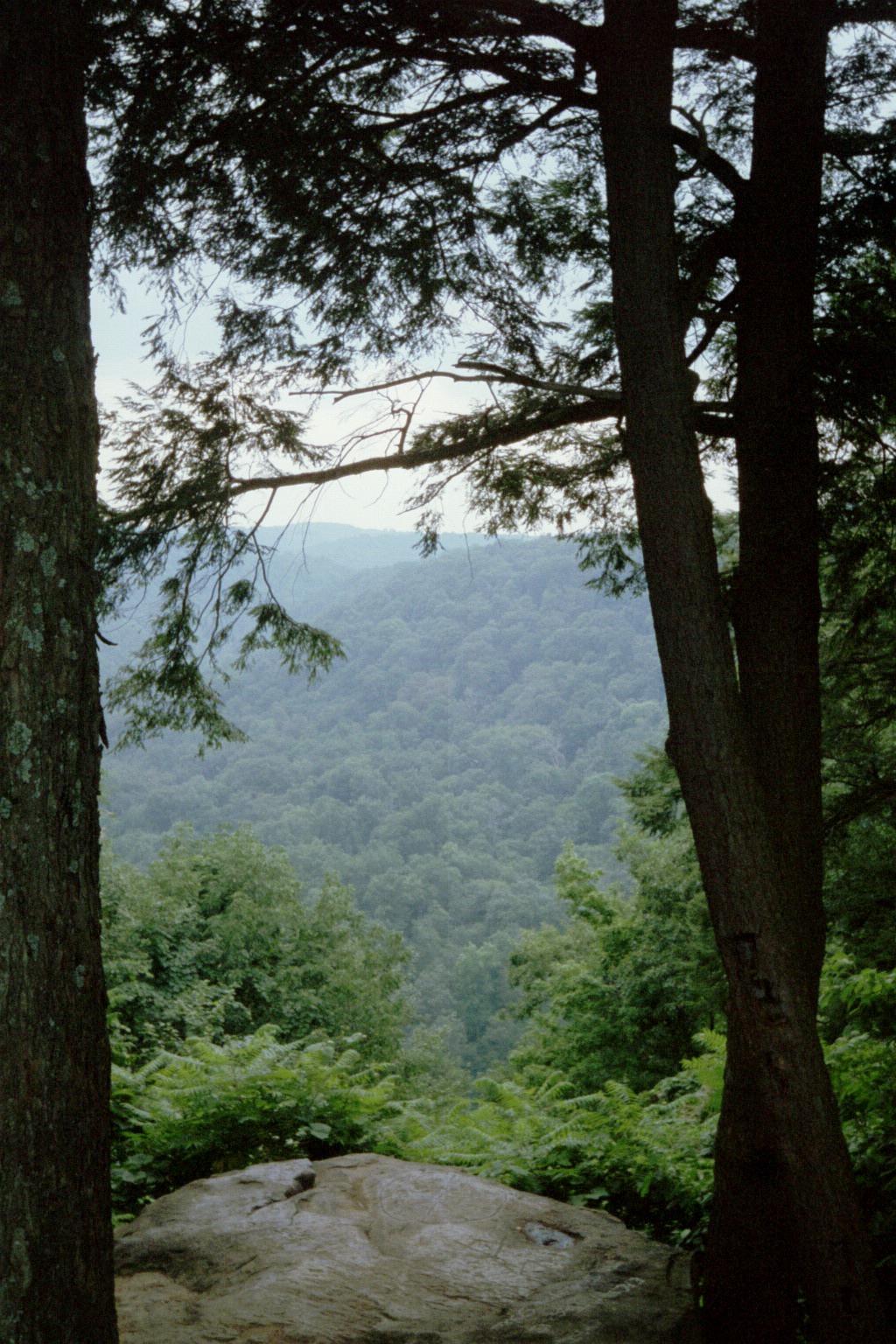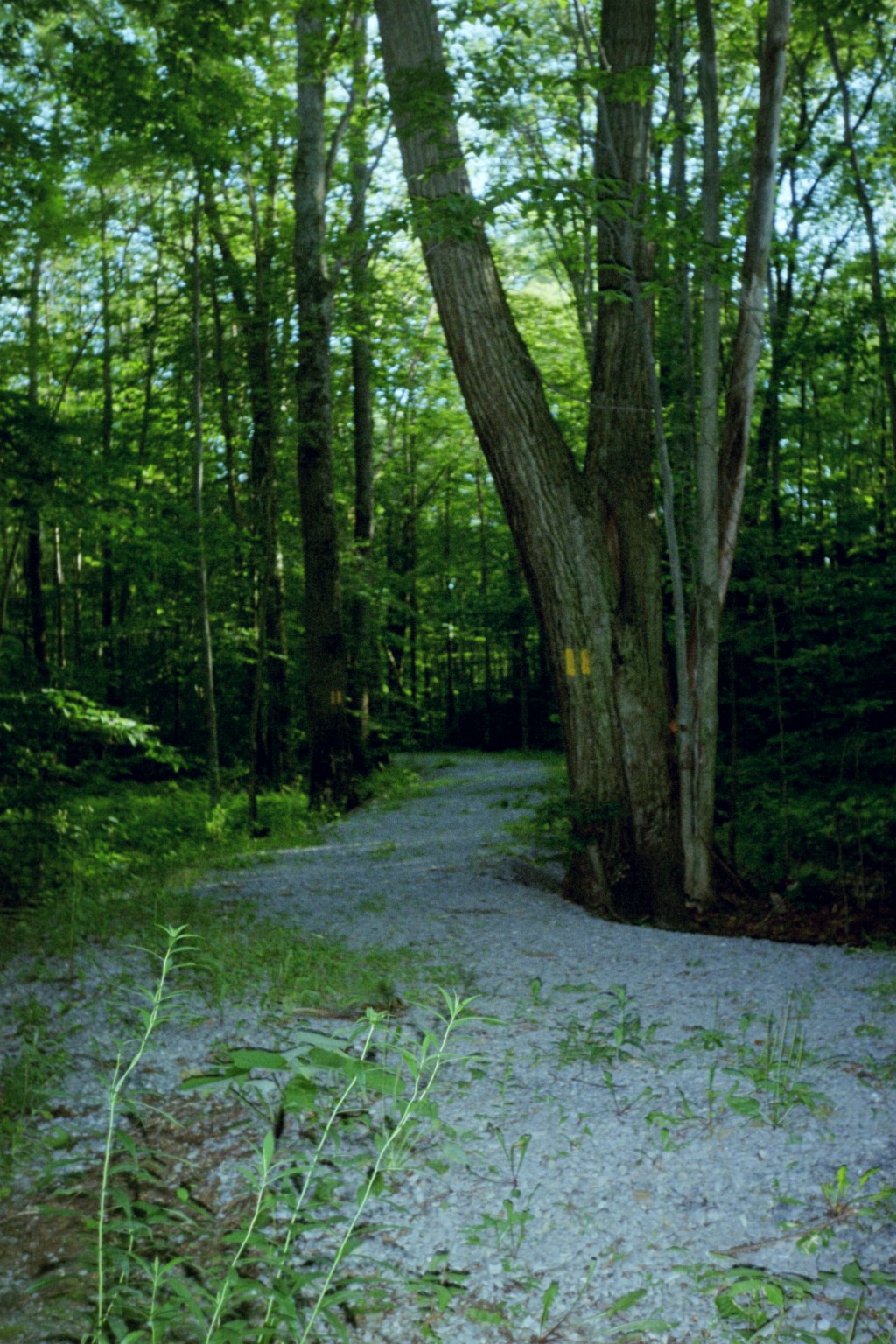Forest bathing in the PA Wilds
By Laurel Patterson
Picture yourself taking a short walk in the woods and reaching a place where you can sit on a large rock and enjoy a panoramic vista. There’s a stand of trees behind you. The sun is gently warming your skin as a light breeze caresses it. Before you, there’s no sign of humans, only a winding river in the valley, stately evergreens on the hillsides, and a few soaring birds in the cloudless sky. You can hear the occasional sounds of small creatures behind you and see some chickadees flitting about. For you, time has stopped. You breathe in the fresh, clean air, and all is right in the world.
Going into the forest and immersing yourself in the forest atmosphere is what the Japanese call shinrin-yoku or forest bathing. This practice was actually encouraged by their government back in the 80’s. Between then and now, much research on forest bathing has revealed that it is extremely beneficial for us — physically and mentally. And shinrin-yoku has since become popular in many countries, including the United States.

More than 30 years of research has revealed that spending time immersing ourselves in the forest atmosphere results in lower blood pressure, decreased blood glucose levels, decreases in depression and anger, increased liveliness,¹ and increased manufacture of killer cells that boost immunity and fight cancer. This is not to say forest bathing should take the place of any medical or psychological treatments, but that it could be a beneficial addition to your health regimen.
Forest bathing is significantly more beneficial than doing the same activities in the city. For example, studies show that walking in the woods results in lowered blood pressure and glucose levels, but walking the same distance in an urban area has less significant results.² Some of these benefits happen just from being in the woods. For example, organic compounds called phytoncides, excreted by a variety of forest vegetation, increase our killer cells.³ We breathe in phytoncides whether we are hiking or simply sitting on a rock. And they have positive effects for up to a month after visiting a forest, the research shows.
So, what does forest bathing entail? What can we do to get the most from our shinrin-yoku experience? Other than simply being in our favorite forested area, we can heighten the benefits by immersing ourselves. To extend the idea of bathing, don’t make it a little bird bath; decide to really get into the water, so to speak. We do this by being more aware and using all of our senses.
Consider entering the woods with a deliberate pause. Make a point of letting go of your troubles before you enter the woods. Some people choose to pick up a stone, hold it in their fist, imagine putting all of their concerns in the stone, and then toss it away.

As you enter the forest, be sure to use all of your senses. What do you smell? Is it the scent of pine or a fresh, earthy smell? What do you feel? Do you feel a warm sun, a cool shade, or perhaps the wind or a breeze? Appreciate your surroundings. Have you looked closely at the bark of the trees, the intricate design of a fern, or the delicate petals of a flower? See the forest as if you are looking at it for the first time… breathe deeply… listen carefully… observe closely. And don’t forget to look up sometimes to see the splendor above.
The sort of natural places where you can experience the benefits of shinrin-yoku can be found throughout the PA Wilds. If you prefer a place with an overlook, there are many great overlooks at the PA Grand Canyon, for example. Overlook Trail and Rim Trail both provide an excellent experience. With 29 state parks and nine state or national forests in the PA Wilds, there are plenty of wonderful places to go forest bathing and enjoy that serene feeling with the hidden benefits of health and well-being.
Citations:
1 Morita E, Fukuda S, Nagano J, Hamajima N, Yamamoto H, Iwai Y, Nakashima T, Ohira H, Shirakawa T. Psychological effects of forest environments on healthy adults: Shinrin-yoku (forest-air bathing, walking) as a possible method of stress reduction. Public Health. 2007 Jan;121(1):54-63. doi: 10.1016/j.puhe.2006.05.024. Epub 2006 Oct 20. PMID: 17055544.
2 Li Q, Otsuka T, Kobayashi M, Wakayama Y, Inagaki H, Katsumata M, Hirata Y, Li Y, Hirata K, Shimizu T, Suzuki H, Kawada T, Kagawa T. Acute effects of walking in forest environments on cardiovascular and metabolic parameters. Eur J Appl Physiol. 2011 Nov;111(11):2845-53. doi: 10.1007/s00421-011-1918-z. Epub 2011 Mar 23. PMID: 21431424.
3 Li, Q., Nakadai, A., Matsushima, H., Miyazaki, Y., Krensky, A., Kawada, T., & Morimoto, K. (2006). Phytoncides (wood essential oils) induce human natural killer cell activity. Immunopharmacology and Immunotoxicology, 28(2), 319-333. https://doi.org/10.1080/08923970600809439.
About the Author: Laurel Patterson
As a retiree, Laurel Patterson enjoys spending some of her time writing and speaking, especially on topics related to ecopsychology, which is the study of the relationship between human beings and nature. She is an alumna of Slippery Rock University, with a Bachelor’s degree in Professional Studies focusing on communication and the environment. As a lifetime member of The Honor Society of Phi Kappa Phi, she believes that the love of learning should be used to benefit fellow humans. Laurel strives to bring an unconventional, humorous, conscientious, and kind approach to her work—connecting nature and research to living well.



